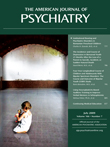Images of Psychiatry: The Caribbean
The Caribbean, a region named by the ocean that bathes its lands, is a collection of 7,000 islands, islets, reefs, and cays, and also includes coastal areas of several Central American and northern South American countries. Best known as a tourist destination with balmy weather, gorgeous beach scenery, and, of course, rum, it also generates creative energy as part of its folklore, its music, and its literature. Nobel Prize winner Gabriel Garcia Márquez drew his inspiration for the village “Macondo” and the ensuing “magical realism” of Latin American literature from his native Aracataca, a small enclave of the Caribbean region of Colombia.
The Caribbean is very heterogeneous. It can be divided by language and colonial heritage into the Spanish-, English-, Dutch-, and French-speaking Caribbean countries. As noted by the authors, this book is restricted to a small section of the Caribbean, some of the English-speaking, Britain-influenced countries of the West Indies, particularly Jamaica, Barbados, Trinidad/Tobago, and the U.S. Virgin Islands.
This book, which resulted from a collaboration with the World Health Organization, is dedicated to the memory of Michael Beaubrun, a professor of psychiatry at the University of the West Indies and a pioneer for mental health development in the islands. The foreword is written by Dr. George Alleyne, the chancellor of the University of the West Indies and a former director of the Pan American Health Organization.
In their introduction, the authors highlight the contrast between the tourist’s view of an idyllic paradise for relaxation—a perception marred only by the distant possibility of a fearsome storm—to that of the impoverished native hurrying to escape an oppressive land. The book brings us back to reality by highlighting the less optimistic perspective of the natives, the cruelty of colonization, and the realization that even in “paradise,” there is mental anguish, and that asylums for the insane also existed there.
The book’s 15 chapters are authored primarily by members of the faculty of the University of the West Indies in Jamaica. The main contributor is Frederick Hickling, one of the coeditors of the book, a Britain-trained Jamaican psychiatrist who is professor and head of the department of psychiatry at the University of the West Indies. His name is listed as author or coauthor of eight of the 15 chapters, including those I view as the most relevant and creative in the book (chapters 1, 7, and 11). Professor Hickling holds strong, authoritative opinions, and he writes with an independent, exuberant style that at times may seem quite controversial for some readers, at least when dealing with mental health theories and interventions. As an example of this, chapter 3, “Philosophy and Epistemology of Caribbean Psychiatry,” reads like a manifesto, denouncing European colonization, capitalism, and even Christian religion for oppressing and subjugating non-whites and calling for the natives to reclaim their “self-sufficiency” and “self-worth.”
Chapters 1 and 2 provide an excellent history of the evolution of psychiatry in Jamaica as well as details on mental health legislation in the islands.
Chapter 7, “Migration and Mental Health” reviews the important topic of mental health issues in Afro-Caribbeans migrating to England. Several scientific reports appearing in the British literature in recent years have reported that people of Afro-Caribbean descent are at a much higher risk for psychosis than any other group in the United Kingdom. This finding is based primarily on analyses of hospital admissions to mental hospitals in England but seems to be supported also by epidemiological data, has been replicated a number of times, and is also supported by reports from other European countries. In this chapter, the authors review the relevant literature and discuss some studies of their own that suggest that Jamaicans in Jamaica do not have an elevated rate of psychosis. However, the authors seem to agree that the observation of an elevated rate of psychosis for Jamaicans in England is accurate. Similar research in the United States has documented significant diagnostic bias resulting in higher rates of psychosis being diagnosed among African-Americans. I suspect that this may be the major reason for the disparities in England, but the authors choose other explanations instead. For instance, while they suggest in passing that there may be diagnostic bias, they blame the adverse conditions faced by the Caribbean immigrants, such as economic deprivation and discrimination, as the major causes of their elevated rates of psychotic disorders.
Chapter 11, “Catalyzing Creativity,” outlines a number of creative undertakings led by Professor Hickling in Jamaica, starting with the “coaching” of a musical entourage (Jamaican reggae band) and followed by descriptions of the author’s development and implementation of “psychohistoriography,” “sociodrama,” “psychodrama,” and “cultural therapies.” Many of these initiatives look rather unique and nontraditional, making use of curious neologisms such as “explanitations” and buttressed with poems and colorful rhymes. There is little information on results and outcomes, and therefore the therapeutic impact of these interesting initiatives remains mainly anecdotal.
Some of the other chapters in the book provide quantitative and qualitative data on Caribbean mental health. For example, chapter 9, “Substance Abuse,” includes valuable data on native substances and patterns of use. Other chapters, such as chapter 4, “Sociology of Mental Health,” chapter 10, “Geriatric Psychiatry,” chapter 12, “The Economic Impact of Mental Illness,” and chapter 15, “Ethical Issues in Psychiatry,” provide some generic information on each of the topics, but I found very little there regarding factual information or description of unique cultural elements applicable to the Caribbean region.
In summary, this book offers an interesting and unique perspective on historical and mental health issues affecting the English-speaking Caribbean. The book should have particular relevance for cultural psychiatrists and those interested in immigration issues.



